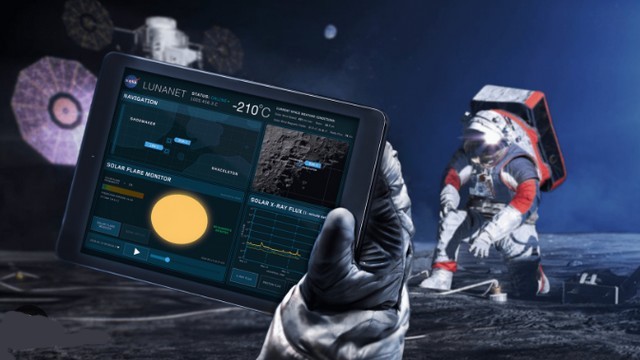Space Tourism: A Wi-Fi Network on the Moon
October 6th, 2025 Rédaction No Comment Technology Accès Wifi, Brian Barnett, Etats Unis, programme Artemis, Soltar Space
“Just as Wi-Fi revolutionized life on Earth, it will be essential for living and working on the Moon. Solstar’s mission has always been to keep people and systems connected in space, and this new contract brings us one step closer to realizing that vision for lunar missions, » said Brian Barnett, CEO of Solstar Space, which has just been awarded the NASA contract to develop its Wi-Fi network on the Moon.
 For the record, Solstar Space was founded in 2017 and is based in New Mexico. It specializes in developing Wi-Fi access points designed for space.
For the record, Solstar Space was founded in 2017 and is based in New Mexico. It specializes in developing Wi-Fi access points designed for space.
In 2018, it sent the first-ever tweet from space, during a flight of Blue Origin’s New Shepard rocket.
Soltar Space has also established itself as a niche player in space connectivity, testing its communications modules aboard satellites and suborbital vehicles.
 Setting up a Wi-Fi network on the Moon is far from straightforward, given the multi-mode and multi-band equipment required for this purpose, which must be able to withstand extreme lunar conditions, such as: temperature resistance and its amplitude variations, encounters with lunar dust that infiltrates every crack in electronic devices, handling high radiation levels, etc.
Setting up a Wi-Fi network on the Moon is far from straightforward, given the multi-mode and multi-band equipment required for this purpose, which must be able to withstand extreme lunar conditions, such as: temperature resistance and its amplitude variations, encounters with lunar dust that infiltrates every crack in electronic devices, handling high radiation levels, etc.
So why does NASA want to deploy a Wi-Fi network on the Moon?
 NASA, in response to this question, highlighted its communications infrastructure needs to support its upcoming lunar missions, such as equipping landers, rovers, habitats, spacecraft orbiting the Moon, and future stations such as the Lunar Gateway.
NASA, in response to this question, highlighted its communications infrastructure needs to support its upcoming lunar missions, such as equipping landers, rovers, habitats, spacecraft orbiting the Moon, and future stations such as the Lunar Gateway.
Thus, the system implemented by Solstar, a deployment of compact Wi-Fi and 3GP solutions, will enable reliable communications not only between astronauts, but also between robotic systems, vehicles, surface infrastructure, and orbital equipment.
 This connectivity implemented by Solstar will also directly contribute to the Artemis program, championed by President Donald Trump, which, let’s not forget, aims to establish a « sustainable presence » around the Moon and bring American astronauts back there for the first time since Apollo in 1972.
This connectivity implemented by Solstar will also directly contribute to the Artemis program, championed by President Donald Trump, which, let’s not forget, aims to establish a « sustainable presence » around the Moon and bring American astronauts back there for the first time since Apollo in 1972.
Against the backdrop of the technological war between China and the United States
Finally, this decision must be put into context, namely that the United States wants to quickly score points in the race to the Moon against China.
This project is therefore not only intended to make life easier for astronauts, but also to short-circuit the space ambitions of Russia, and above all, China, which plans to send a Chinese crew to the Moon before 2030.
 Under Xi Jinping’s leadership, the Chinese government has invested billions of euros to catch up with the United States and Russia.
Under Xi Jinping’s leadership, the Chinese government has invested billions of euros to catch up with the United States and Russia.
As proof of Donald Trump’s importance for US astronauts to be the first to land on the Moon, Solstar Space now has six months to develop preliminary designs for future access points capable of connecting essential systems via Wi-Fi.
As a quick aside, while many regions of our blue planet still remain « white zones, » the Moon is preparing to acquire its first wireless network.
On the same subject
Why Delta Air Lines launches Locals
Delta Locals is a new digital storytelling platform created by Delta Air Lines. Launched...
A mini spaceship that delivers everywhere in less than an hour
Inversion is an American company founded in early 2021 by Justin Fiaschetti and Austin...
Cryptocurrency : The heist of the century from North Korea
A historic cryptocurrency heist attributed to the North Korean group Lazarus, dubbed « TraderTraitor » by...










